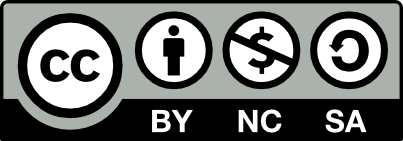Signatures as an object of autoforgery (self-forgery) = Podpisy jako obiekt autofałszerstwa
Wybierz format
RIS BIB ENDNOTESignatures as an object of autoforgery (self-forgery) = Podpisy jako obiekt autofałszerstwa
Data publikacji: 05.03.2024
Archiwum Medycyny Sądowej i Kryminologii, 2023, Vol. 73 (3), s. 257-271
https://doi.org/10.4467/16891716AMSIK.23.021.19321Autorzy
Signatures as an object of autoforgery (self-forgery)
The study presents the results of research aimed at isolating the graphic features most frequently and least frequently modified by people committing autoforgery (self-forgery) of signatures in situations where the appearance of their natural signatures is not known to the recipient. The research covered a total of over 12,000 signatures from 200 individuals. The most successful attempts at autoforgery of legible and illegible signatures of each test subject were selected for the final evaluation. It was found that autoforgery changes are most often focused on the most striking features of the signatures, such as the structure of letters in the initial part of the signature, size, readability, impulse, and slope. Secondary features, more difficult to notice or those whose existence the writers are not aware of (such as the presence or absence of additions, the arrangement of letters in relation to each other, the shape and direction of signature lines, the format of legible signatures) are usually omitted in autoforgery activities. Detecting autoforgery can be a big challenge for experts, because in practice, any significant differences between the questioned signature and comparative signatures are often mistakenly considered to be the result of forgery. Therefore, in order to detect autoforgery, it is necessary to analyze the structure of easily noticeable features that most influence the so-called pictorial effect of the signature in combination with the unattractive features that remain unchanged in most cases of autoforgery. The more characteristic the latter are, the more their consistency in the questioned and comparative material proves self-forgery, regardless of the differences in the primary features. In the case of a forged signature, the opposite is true: the most easily noticeable features of the signature are imitated by the forger, and the differences occur mainly in secondary features.
Levinson J. Questioned Documents. A Lawyer’s Handbook, Academic Press, San Diego 2001
Koppenhaver KM. Attorney’s Guide to Document Examination, Quorum Books, Westport-London 2002
Koppenhaver KM. Forensic Document Examination, Humana Press, Totowa, New Jersey, 2007
Morris R. Forensic Handwriting Identification, Academic Press, San Diego-London 2000
Purdy DC. Identification of handwriting. In: Kelly JS, Lindblom BS, Scientific Examination of Questioned Documents, CRC Taylor & Francis, Boca Raton-London-New York 2006; 47-74
Webb FE. The Question of Disguise in Handwriting, Journal of Forensic Science 1978; Vol. 23, no 1: 149-154
Franck FE. Disguised Writing: Chronic or Acute, Journal of Forensic Sciences 1988; Vol. 33, no 3: 727-733
Ellen D. The Scientific Examination of Documents, Methods and techniques, Taylor & Francis 1997
Bird C, Found B, Ballantyne K, Rogers D. Forensic handwriting examiners’ opinions on the process of production of disguised and simulated signatures, Forensic Science International 2010; 195: 103-107
Alford E. Disguised Handwriting. A Statistical Survey of How Handwriting Is Most Frequently Disguised, J Forensic Sci 1970; 15(4): 476-488
Harris JJ. Disguised Handwriting, J. Crim. L. Criminology & Police Sci. 1952-1953; 43: 685-689
Gajdowski J. Występowanie indywidualnych cech graficznych w przypadku tzw. „autofałszerstwa” (maskowanie pisma ręcznego). In: Kegel Z., Materiały I Wrocławskiego Sympozjum Badań Pisma Ręcznego, Wydawnictwo Uniwersytetu Wrocławskiego, Wrocław 1986; 127-130
Lewicki A. Autofałszerstwo. Możliwość identyfikacji i jej ograniczenia. In: Wybrane aspekty kryminalistycznych badań paraf, podpisów i znaków diakrytycznych, Wydawnictwo CLK KGP, Warszawa 1996; 95-119
Malewski H., Żalkauskiene A. Umyślna falsyfikacja własnego podpisu w celu zakwestionowania jego autentyczności. In: Kegel Z., Problemy dowodu z dokumentu, Materiały VIII Wrocławskiego Sympozjum Badań Pisma, Wydawnictwo Uniwersytetu Wrocławskiego, Wrocław 1999; 143-151
Michel L., Die Verstellung der eigenen Unterschrift (I), Archiv für Kriminologie 154, 1-2/1974: 44-53
Michel L., Die Verstellung der eigenen Unterschrift (II), Archiv für Kriminologie 154, 3-4/1974: 5-76
Koziczak A. Metody pomiarowe w badaniach pismoznawczych, Wyd. Instytutu Ekspertyz Sądowych, Kraków 1997
Matuszewski Sz., Wnioskowanie o niejednorodności próbek pisma, In: Wójcikiewicz J. Rozprawy z Jałowcowej Góry, Materiały III Zjazdu Katedr Kryminalistyki, Wyd. Instytutu Ekspertyz Sądowych, Kraków 2004; s. 203-209
Informacje: Archiwum Medycyny Sądowej i Kryminologii, 2023, Vol. 73 (3), s. 257-271
Typ artykułu: Oryginalny artykuł naukowy
Tytuły:
Signatures as an object of autoforgery (self-forgery)
Signatures as an object of autoforgery (self-forgery) = Podpisy jako obiekt autofałszerstwa
Uniwersytet Kazimierza Wielkiego w Bydgoszczy, Instytut Prawa i Ekonomii, pl. Weyssenhoffa 11 85-072 Bydgoszcz
Publikacja: 05.03.2024
Otrzymano: 25.09.2023
Zaakceptowano: 03.11.2023
Status artykułu: Otwarte
Licencja: CC-BY-NC-SA

Udział procentowy autorów:
Korekty artykułu:
-Języki publikacji:
Angielski, PolskiLiczba wyświetleń: 334
Liczba pobrań: 229
Sugerowane cytowania: Nature